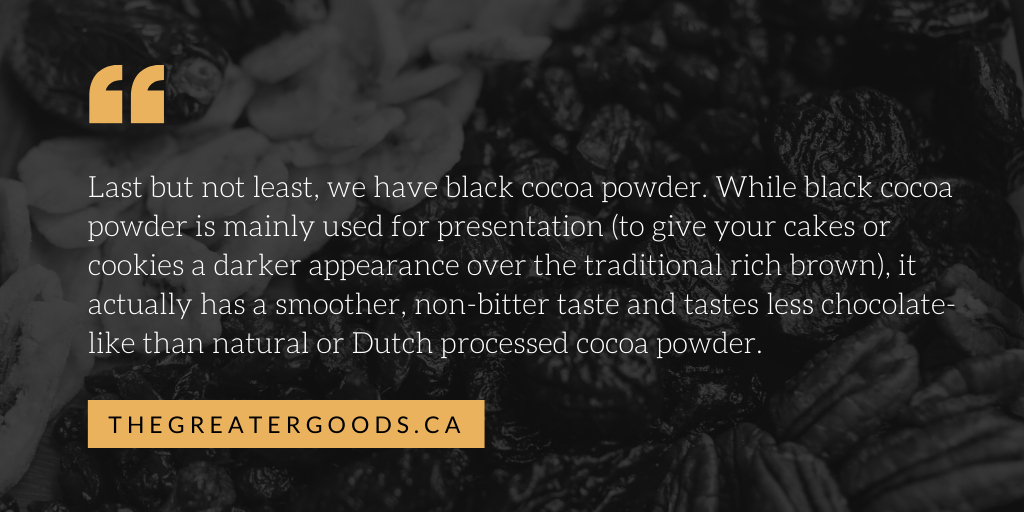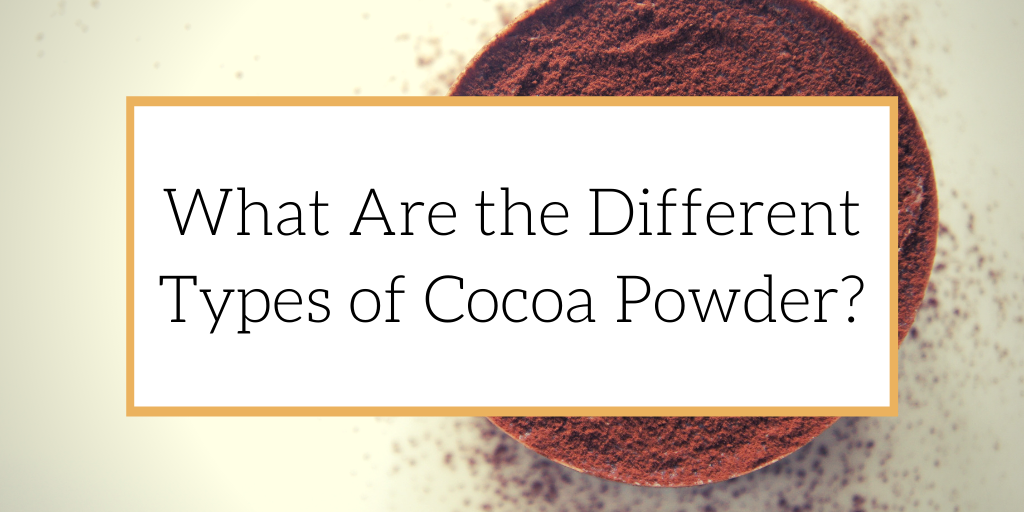All of your favorite rich, gooey, chocolatey desserts share one thing in common – and that’s cocoa powder. Cocoa powder in itself is quite inexpensive and can virtually transform a recipe with just a few spoonfuls. But did you know that there’s different types of cocoa powder? And we’re not just talking about the difference between cocoa and cacao. There are 3 different types of cocoa powder available that each serve a slightly different purpose – even if it’s just cosmetic. Scroll down to learn more about the three most popular varieties of cocoa powder.
Natural Cocoa Powder
Natural cocoa powder is the most common type of cocoa powder, both in stores and when used in recipes. Natural cocoa powder will be most widely available and the cheapest option for purchasing cocoa powder and contains a large amount of valuable nutrients.
Epicurious.com tells us more about what you can expect with natural cocoa powder:
“Natural” signifies that it is unprocessed beyond the initial separating from the cocoa butter and grinding into a powder; it is also sometimes labeled on packaging as “unsweetened cocoa powder” or “pure cocoa powder.” It is fruity, complex, and bitter in flavor, and light brown in color. Cocoa beans are naturally quite acidic, and regular cocoa powder is as well, with a pH level between 5.3 and 5.8. This makes it a great addition to recipes that include baking soda, as the cocoa will trigger the chemical reaction that causes lift and lightness in your final bake.”
Dutch Process Cocoa Powder
Dutch process cocoa powder has a smoother and more mellow flavor that gives off earthy, woodsy notes. It’s important to note that Dutch process cocoa powder is not acidic, so recipes that include this type of cocoa powder usually must include baking powder.
Serious Eats explains more on the composition and appearance of Dutch process cocoa powder:
“Dutch process cocoa powder (also sometimes called “alkalized,” “European style,” or “Dutched”) is washed with a potassium carbonate solution that neutralizes cocoa’s acidity to a pH of 7. Although all cocoa powders can vary in color from light reddish brown to a richer dark brown, the Dutch process gives the powder a noticeably darker hue.”
Black Cocoa Powder

Last but not least, we have black cocoa powder. While black cocoa powder is mainly used for presentation (to give your cakes or cookies a darker appearance over the traditional rich brown), it actually has a smoother, non-bitter taste and tastes less chocolate-like than natural or Dutch processed cocoa powder.
TheBestCakeRecipes.com explains what black cocoa powder is and how it’s processed:
“Black cocoa powder is a highly processed form of cocoa powder. It is ultra-dutch processed, meaning it is treated with an alkaline solution to reduce acidity. It is smooth and super dark. Much darker than light brown natural cocoa powder (which is not as processed).”
Here at The Greater Goods, we offer consultation services for your business, from food production to distribution. If you’re looking for advice on how to get up and running, we offer a free consultation with our expert food industry consultants and food brokers.
